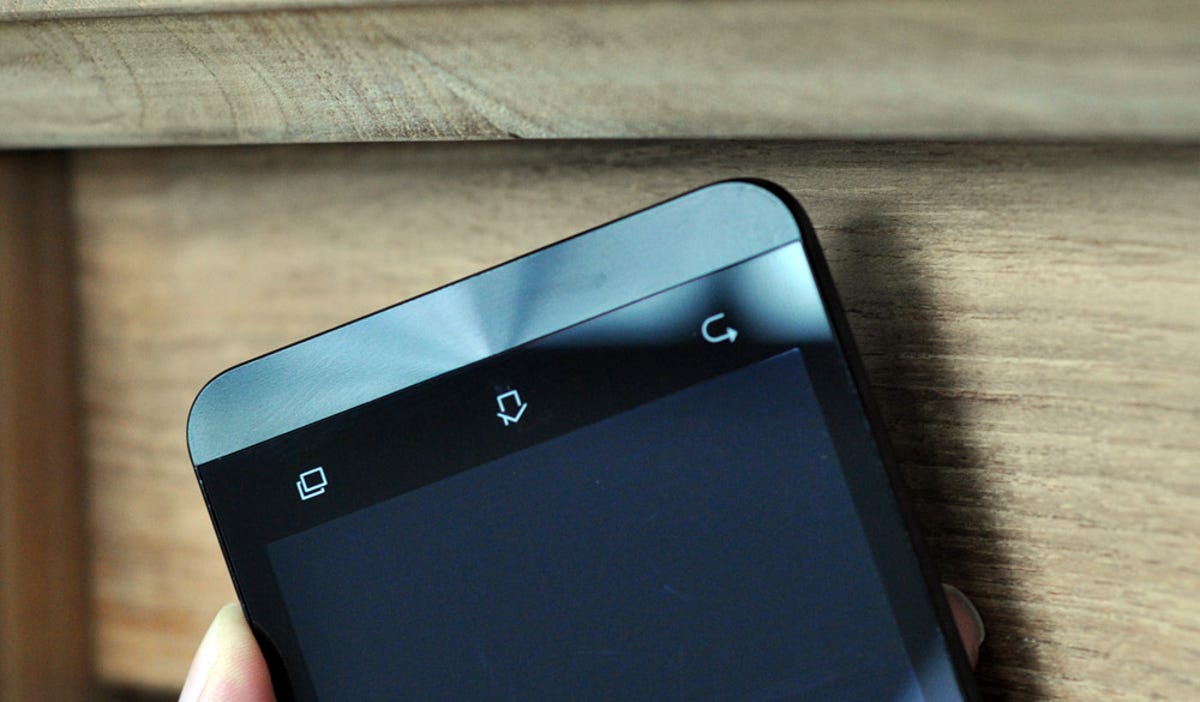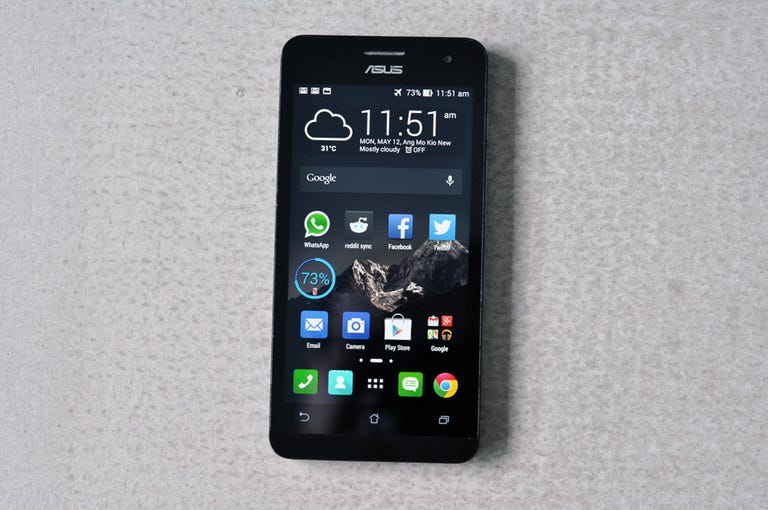 Why You Can Trust CNET
Why You Can Trust CNET Asus ZenFone 5 review: An excellent low-cost phone packed with features
The 5-inch ZenFone has features that high-end flagship phones will envy, but lacks the power to pull it off.
The Asus ZenFone 5 comes packed with plenty of features: It has a sleek, minimalist design that resembles the ambitious and expensive PadFone range, but it retails at an extremely affordable non-contract price: around $190, £130 or AU$200. It all sounds great, and it is, but bear in mind that you'll want the 2GB RAM version just to avoid any potential performance issues.
The Good
The Bad
The Bottom Line
Sitting in the middle of the Asus ZenFone series, the 5-inch handset has 4-inch and 6-inch siblings, the ZenFone 4 and ZenFone 6. The ZenFones are powered by an Intel Atom processor, instead of the usual ARM chips from Qualcomm or MediaTek you generally find in more expensive phones.
The ZenFone 5 is currently available in some countries in Asia -- China, Indonesia, Malaysia, Singapore, Taiwan and Vietnam. The ZenFone series is expected to go on sale in the UK as well, though as yet it's only available via a few small online retailers. Other countries have yet to be announced.
Editors' note: After I encountered sluggish performance in my initial ZenFone 5 review model, Asus sent us a new unit with updated firmware and 2GB RAM (the retail model sold in Singapore). Due to the improved performance that rendered the previous issues moot, I've updated this review and the score accordingly.
Design
Drawing on the PadFone's design aesthetic, the ZenFone 5's is simple and clean. It has rounded edges, a curved soft-touch plastic back and touch-sensitive buttons located below the screen. The 5-inch HD display has a 1,280x720-pixel resolution, for a density of 294 pixels per inch, which is respectable but a far cry from the HTC One M8 's 441ppi.
The only thing that stands out is a metallic band below the touch-sensitive buttons, etched with the concentric circle pattern found on the PadFone Infinity series. It's not really very obvious and doesn't affect the grip of the phone, but I quite like that it gives the ZenFone 5 a premium touch for its low price.

The rear cover is removable, but the 2,110mAh battery is embedded. All you can do with the back cover off is access the dual SIM-card and microSD-card slots. Also on the handset's back are the audio speaker and the 8-megapixel camera.
The ZenFone 5 feels quite solid and it weighs just 5.11 ounces (145g). Asus has made a good phone here, and it shows.
Internally, the ZenFone 5 sports a 2GHz dual-core Intel Atom Z2580 processor, instead of your usual Qualcomm or MediaTek effort. Complementing this is 8GB of internal storage and 2GB of RAM. Your standard connectivity options of Wi-Fi and Bluetooth are available, but NFC is absent.
Software and features
The ZenFone 5 runs Android 4.3 with a custom skin called ZenUI layered over the OS. ZenUI has been redesigned with a cleaner and flatter look. The company says its engineers have made over 200 different modifications to the OS, all with improving performance in mind.
The first thing you'll see when you turn on the ZenFone 5's display is a revamped lockscreen, with a timeline of your upcoming appointments. Another feature is a reminder app called Do It Later, which helps keep track of important tasks such as replying to SMSes. You can do this easily by selecting the reply later option, which will add it to the Do It Later app. This works for articles you want to read and missed calls, too.
Like HTC's Sense UI, the built-in Asus apps, such as the calendar, email, phone and messages are color-coded. I'm not convinced the shading is useful, even in HTC's Sense UI, because there's almost no need to use a color to recognise the app you're using unless they're visually similar in layout (which they aren't). It does look nice, however.
The ZenFone 5 also comes with Asus Open Cloud technology, which integrates all your cloud storage services together in one app (such as Google Drive, Box, Dropbox or Asus' own WebStorage).
Camera
Packing an 8-megapixel camera, the ZenFone 5 uses Asus' PixelMaster Camera technology, which the company claims delivers professional quality photos. The camera has a f/2.0 aperture and a five-element lens.
In the camera app itself, Asus has added a whole suite of features -- notable ones include a depth-of-field effect, panorama, tilt shift, and HDR. The Low Light mode is the best of the lot, allowing a user to take pictures in really dim conditions, though it works best if you're able to mount the phone on a tripod (or keep it really steady). Turning on the flash for dim lighting conditions may actually be the best option.
Now, while all these features sound pretty handy, the performance of the camera is less than impressive. The electronic shutter is slow -- oftentimes you'll be missing the shot you want to take, especially if your subject is moving. Some images can become overexposed, resulting in pictures with washed-out spots.
Performance
The dual-core Intel Atom Z2580 processor may be clocked at 2GHz, and its performance is seems comparable with my experience with budget handsets using the quad-core MediaTek MT6589, such as the Xiaomi Redmi .
On performance benchmark Quadrant, the phone scored 8,252 -- poor compared with the slightly more expensive HTC Desire 816 , which managed 12,708. On the Linpack multithread test, the ZenFone 5 spat out a low score of 106.28 MFLOPs.
The benchmark scores do show that the Intel Atom processor isn't quite as powerful, but the performance of the phone was satisfactory.
Call quality
I had no issues with the call quality of the ZenFone 5, but it's a different story when the handset is put in speakerphone mode. The rear speaker is pretty soft -- I could barely make out what was being said unless I held the phone next to my ear, which defeats the whole purpose of using the speaker.
Battery life
Powered by the embedded 2,110mAh battery, the phone lasted a day of use with just one SIM card in operation. With two SIM cards, it's likely the battery life will be shorter. Asus has included some power-saving tweaks that can help extend it, however.
The Ultra-saving mode, when turned on, will shut down network connectivity when the display is turned off. This means background apps such as messaging ones will not work properly when this power mode is selected.
Conclusion
Given that my first taste of the Asus ZenFone 5 wasn't quite as positive due to the sluggish performance encountered, Asus has done a good job in fixing the issues raised. The phone's performance is pretty smooth now, and this phone now is definitely worth picking up.
Compared with Xiaomi's Redmi , which is cheaper and has similar specs (a smaller 4.7-inch HD display, dual-SIM, 8-megapixel camera), the ZenFone 5 can give the budget Redmi a challenge. The ZenFone's more modern UI does have a stronger appeal, but the Redmi's lower price may have more appeal.


